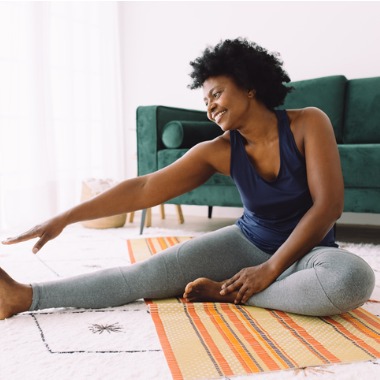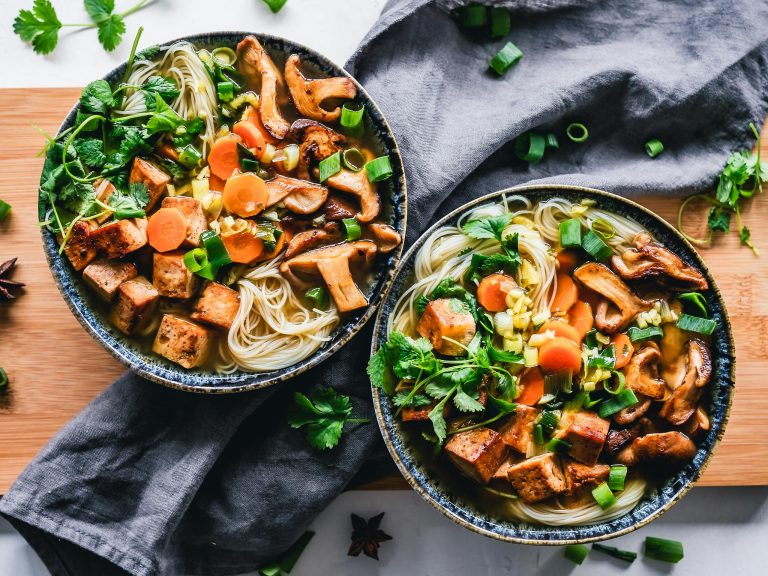Add 2 tbsp to your bedtime routine…
One of the most prevalent issues that many people have, particularly as they age, is knee discomfort.
A person’s knee joints are essential to their everyday activities since they allow us to bend, straighten, and support our weight. Knee pain can be so bad that it interferes with daily activities and leads to a lot of lifestyle issues. Imagine seeing your train at the platform after arriving late to the train station. You miss the train because your knees hurt so much that it’s practically difficult to run! Or let’s say you drop your wallet and are unable to bend your legs to retrieve it due to knee pain.
Several factors can cause knee pain, including past injuries, osteoarthritis, sprains, etc. However, home remedies, including diet, exercise, and mobility support, can control and improve the pain. A few home remedies can be found in a well-stocked Indian kitchen or a modern first-aid kit, which can help relieve symptoms before you seek medical help.
Read on to learn more about knee pain and home remedies that can help you deal with this condition.
Table of Contents
- Knee Pain Causes: 8 Surprising Culprits Behind Your Knee Pain
- Knee Joint Pain Treatment At Home: 7 Simple Solutions For Lasting Relief
- Home Remedies For Knee Swelling And Knee Pain
- What To Avoid During Knee Pain? Keep These 5 Tips In Mind
- Dietician’s Recommendation
- The Final Say
- FAQs
- References
Knee Pain Causes: 8 Surprising Culprits Behind Your Knee Pain

Here are some possible causes of knee pain listed:
1. Injury or Trauma
Any kind of injury, such as sprains, strains, fractures, dislocations, tears, inflammation, or direct blows to the knee, can cause pain and discomfort. Past injuries that weren’t treated properly can also cause knee pain from time to time.
2. Osteoarthritis
Osteoarthritis (degenerative joint disease) is a common type of arthritis. Osteoarthritis causes the cartilage in the knee to wear away over time, causing the bones to rub together. This leads to pain, swelling, stiffness, and reduced flexibility.
3. Rheumatoid Arthritis
RA, or rheumatoid arthritis, is a long-term autoimmune disease that can cause knee pain, swelling, and stiffness in the knees. This happens because RA affects the capsule surrounding the knee joint, which is called the synovial membrane.
4. Tendonitis
Jumper’s knee, also called Patellar Tendonitis, is a common injury due to overuse or repetitive strain. The strain can sometimes cause tiny tears in the tendon that your body attempts to repair. But if a person does not allow the tendon to rest, the tears multiply, resulting in pain from the inflammation and weakening of the tendon.
5. Meniscal tear
We have two menisci cartilage in each knee, and a tear in one or both can cause knee pain and swelling, so much so that it can be difficult to walk and straighten the knee. Meniscal tears can be caused by forceful twists of the knees, sudden movements, or trauma. It can also be a result of degenerative changes in older people.
6. Ligament Injury
Tearing, stretching, or straining the knee ligaments due to a sudden twist, direct impact, or sports-related injury can cause ligament injuries, which can result in pain and instability.
7. Gout
Accumulation of uric acid in the knee joint(s) causes gout, a type of inflammatory arthritis. It leads to sudden and intense pain, swelling, itching and redness.
8. Overuse and Mechanical Issues
Overusing the knee joints or repetitive motions like running and jumping can strain and injure the knees and cause overuse injuries.
Poor biomechanics, such as flat feet or inappropriate footwear that puts excessive stress on the knee joints, may also contribute to knee pain and discomfort.
Knee Joint Pain Treatment at Home: 7 Simple Solutions for Lasting Relief
Knee pain may not always be severe enough for you to visit a doctor, but you should always take care of the condition so that it does not get worse. Here are some ways you can improve your knee pain at home and reduce the likelihood of getting knee pain in the future:
1. Exercise
If you have knee pain, exercise should be your primary treatment option for the pain or discomfort. Daily exercise can help you maintain and gain muscle strength and mobility. Exercise is critical in treating knee pain and the underlying reasons for knee discomfort. Resting or limiting movement in your leg can help you avoid pain but can also stiffen the joint and slow recovery. Exercising is a safe and effective way to relieve minor knee discomfort caused by overuse, arthritis, or other reasons.
Some exercises to relieve knee pain are:
- Sitting Straight-Leg Raise
- Ankle Stretch
- Single-Leg Dip
- Wall Squat
2. Physiotherapy
Physiotherapy knee rehabilitation regimens have been shown to reduce pain intensity and increase knee function. Physiotherapy’s primary goal is to increase the flexibility and mobility of the knee joints. It also helps with knee discomfort, strengthens the muscles around the knee joints, reverses damage, and prevents further bouts of pain and injury.
RICE therapy is a popular form of therapy to treat soft tissue injuries and joint pain. It consists of four steps:
- Rest the knee(s).
- Ice the injured area using ice packs for 15-20 minutes.
- Compression. Wrap the area with a compression bandage.
- Elevate the knee above the level of your heart.
This technique is widely recommended for the immediate treatment of knee injuries.
3. Using Heat or Cold Compression
Heat or cold therapies can provide immediate, short-term relief from knee pain.
Heat Therapy:
It can reduce pain and improve circulation in and around the knee joint. You can do it by taking a warm bath or shower, applying warm paraffin wax to painful joints, and using a heating pad or hot water bottle on the joints.
Cold Therapy:
Cold or ice therapy numbs the area, which relieves tension and pain. It should not last more than 20 minutes. You can do cold therapy by wrapping ice or ice packs in a towel and applying it to painful areas or soaking the affected limb in ice water.
4. Balanced Diet And Weight Control
Obesity or being overweight can be one of the culprits of knee pain, as it puts pressure on your joints. You might be able to relieve your symptoms and reduce the stress on your joints through a balanced diet and regular exercise.
Eating a balanced diet with the daily required nutrition can help you lose weight, and also help your bones, knees and muscles get stronger, making you less likely to have knee pain.
5. Regular Exercise or Yoga
While rest is essential for immediate pain relief, gentle exercise is just as important for long-term knee health. Low-impact exercises such as walking, swimming, bodyweight workouts, or stationary cycling improve flexibility, strengthen muscles and promote blood flow to the knee joint.
Yoga, with a focus on stretching and strengthening, can significantly improve knee pain and function.
6. Maintain Proper Posture With Knee Support And Braces
Poor posture can misalign the knees or cause them to twist or rotate incorrectly, which can lead to knee pain. It can also be a contributing factor to flat feet, which can cause knee pain. Focus on correcting your posture when standing, sitting, and walking.
Knee braces can be beneficial in stabilising the joints and providing pain relief during physical activities.
7. Using The Right Footwear And Prosthetics
Supportive footwear with good arch support can significantly impact knee health. Orthotics are foot pads or heel inserts designed to correct foot abnormalities and help relieve pain related to various foot and ankle conditions by distributing weight evenly and reducing stress on the knees.
Home Remedies for Knee Swelling and Knee Pain
1. Epsom Salt:
An excellent treatment for arthritis is consuming Epsom salt, which contains a high concentration of magnesium, which helps harden and strengthen your bones.
Ingredients
- Lemon juice – 3 tbsp.
- Epsom salt – 3 tbsp.
- Hot water – 1 cup
Method of preparation
- Mix 3 tbsp. of fresh lemon juice and 3 tbsp. of Epsom salt in a cup of hot water and drink when comfortably warm.
- For best results, take one tablespoon of this mixture twice a day (morning and evening).
2. Turmeric:
Turmeric, a golden spice commonly used in Indian cuisine, contains a chemical known as curcumin that has anti-inflammatory and antioxidant properties. Turmeric has natural anti-inflammatory properties that aid in reducing joint pain and improve overall well-being. It also acts as an antioxidant, fighting against oxidative stress. Turmeric powder mixed with chuna (limestone powder) and mustard oil helps relieve pain faster.
Ingredients:
- Mustard oil – 2 tbsp.
- Turmeric – 2 tbsp.
- Limestone powder (chuna) – 1 tsp.
Method of preparation:
- Add 2 tbsp of mustard oil to a wok.
- After heating slightly, add turmeric and mix well. Add limestone powder and switch off the flame.
- Mix thoroughly, then apply it to your knees when lukewarm, wrap with a cloth, and apply a warm compress.
3. Massage
Regular muscle and joint massage can help relieve joint pain. Massage therapy has long been used to improve flexibility and blood circulation, as well as relieve pain and reduce stress and anxiety.
How to:
Start by applying light pressure around the knee joint and moving your fingers in a circular, side-to-side, or up-and-down motion. Gradually increase the pressure.
4. Dietary changes
Eat foods that have anti-inflammatory properties. These include fish, flaxseeds, chia seeds, turmeric, etc. Eating a diet with anti-inflammatory foods can help reduce knee inflammation and pain.
5. Topical ointments
Applying topical creams or ointments that contain menthol, capsaicin, or arnica can relieve knee pain and provide temporary relief. Some herbal ointments containing ingredients such as capsaicin and arnica are active ingredients in foods that can relieve pain when used as ointments, lotions, and transdermal patches.
How to:
Take a dollop of ointment and apply a thin layer to the affected area. Gently massage the ointment into your skin until the ointment has been completely absorbed.
6. Hydrotherapy
Soaking the affected area in a warm water bath, especially with essential oils, can relax muscles and provide relief from knee pain. Hydrotherapy also includes water-based exercises performed in a swimming pool. The buoyancy that the water provides reduces stress on the joints while allowing gentle exercise to improve mobility and relieve pain.
What To Avoid During Knee Pain? Keep These 5 Tips In Mind
1. Don’t: Ignore Knee Pain
Having knee pain for brief periods of time is okay. But if your knee pain is persistent, then ignoring it can have serious consequences. It’s important not to dismiss or ignore any discomfort or pain in the knees. Ignoring knee pain can potentially lead to further damage, worsening the underlying condition and increasing the pain and swelling.
2. Don’t: Stay In The Same Position For Too Long
We all know what it’s like when your knee hurts. Even the simplest everyday tasks may seem impossible. But did you know that staying in the same position for too long can worsen knee pain? When you don’t move your body, your muscles can stiffen and your joints ache.
3. Don’t: Stop Taking The Drug Suddenly
Knee pain is a common problem with a variety of causes. When you are taking medication for knee pain, it is important not to stop suddenly without consulting your doctor. Abrupt withdrawal can lead to increased pain and potential joint damage.
4. Don’t: Overuse Or Push Yourself Too Hard
Knee pain is a common problem that can be caused by a number of factors. Overusing your knees or pushing yourself too hard are two of the most common causes of knee pain. If you put too much stress on your knees, you can cause tears or strain on the joint and the surrounding tissues. This may lead to stiffness, pain, swelling, inflammation and even injury. It is important to take care of your knees and not overdo it.
5. Don’t: Ignore Your Weight
If you are obese or overweight, losing weight will reduce stress on the knee. You don’t even have to lose too much weight, just enough to lower the pressure on your knees. Small changes still make a big difference.
Dietitian’s Recommendation
Knee care is an investment in your mobility and overall well-being. Incorporating these natural remedies into your routine can support healthy knees and you can keep moving with confidence, without unintentionally damaging your knees. Massage, specific dietary supplements, heat and cold therapy, and gentle exercise such as yoga and water exercise are all common home remedies that will not only help your knee pain but aid in getting stronger knees.
The Final Say
The knee joint is one of the most difficult but also most important to maintain in the body, which is why it is vulnerable to damage and other chronic problems. Knee pain can interfere with daily activities such as exercise, climbing stairs, and housework. Aching knee pains can flare up after increased physical activity or strenuous exercise. Knee immobility can make daily activities difficult. All the links shared above are important, effective and exercises in treating knee pain.
FAQs
1. What is the quickest way to relieve knee pain?
There is no one prescribed way to relieve knee pain, but rather a combination of best practices such as physical therapy, proper diet, walking aids, and more.
2. What to avoid during knee pain?
Excessive rest, neglecting knee warm up and cool down, and participating in high impact activities, among others, can be detrimental to your recovery from knee pain.
3. Is walking good for knee pain?
Yes, walking is a form of low-impact exercise that can be beneficial for knee pain. It is linked to reducing and preventing knee pain related to osteoarthritis.





